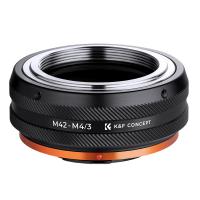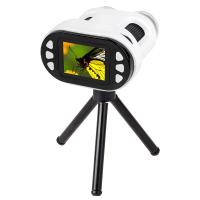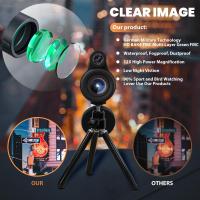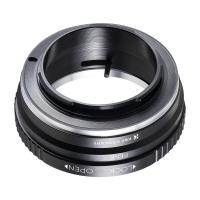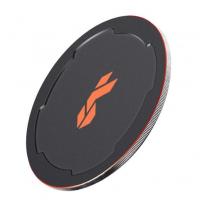How To Identify E Coli Under A Microscope ?
E. coli can be identified under a microscope by its characteristic morphology. E. coli is a gram-negative, rod-shaped bacterium that typically measures 2-3 micrometers in length and 0.5-1 micrometer in width. It has a single, polar flagellum that allows it to move in a characteristic "swimming" motion. E. coli also has a distinctive arrangement of its chromosomal DNA, which appears as a condensed region called the nucleoid.
To visualize E. coli under a microscope, a sample of the bacteria can be stained with a dye such as crystal violet or safranin and then examined using a light microscope. Under high magnification, E. coli cells will appear as elongated, rod-shaped structures with a characteristic pink or purple coloration (depending on the staining method used). The presence of flagella can also be observed by using a special staining technique called the flagella stain.
1、 Staining techniques for E. coli detection

Staining techniques for E. coli detection are commonly used to identify the presence of this bacterium under a microscope. One of the most commonly used staining techniques is the Gram stain, which involves the use of crystal violet and iodine to stain the bacterial cell wall, followed by decolorization with alcohol and counterstaining with safranin. E. coli is a Gram-negative bacterium, which means that it will appear pink or red under the microscope after staining.
Another staining technique that can be used to identify E. coli is the acid-fast stain, which is commonly used to identify Mycobacterium tuberculosis. However, this technique is not commonly used for E. coli detection.
In addition to staining techniques, other methods can be used to identify E. coli under the microscope, such as fluorescence microscopy. This technique involves the use of fluorescent dyes that bind specifically to E. coli cells, allowing them to be visualized under a microscope.
It is important to note that while staining techniques and microscopy can be useful for identifying E. coli, they are not always reliable. Other methods, such as culture-based methods and molecular techniques, may be necessary to confirm the presence of E. coli and to identify specific strains.
In conclusion, staining techniques for E. coli detection are commonly used to identify the presence of this bacterium under a microscope. The Gram stain is the most commonly used staining technique, but other methods, such as fluorescence microscopy, can also be used. However, it is important to note that these methods are not always reliable and may need to be supplemented with other techniques to confirm the presence of E. coli.
2、 Morphological characteristics of E. coli cells

Morphological characteristics of E. coli cells can be used to identify the bacterium under a microscope. E. coli cells are typically rod-shaped and measure approximately 2 micrometers in length and 0.5 micrometers in width. They have a single, polar flagellum that allows them to move in a motile manner. E. coli cells are Gram-negative, meaning that they have a thin peptidoglycan layer in their cell wall and an outer membrane containing lipopolysaccharides.
Under a microscope, E. coli cells can be stained using a variety of techniques, including Gram staining and acid-fast staining. Gram-negative bacteria like E. coli will appear pink or red after Gram staining, while Gram-positive bacteria will appear purple. Acid-fast staining can be used to identify Mycobacterium species, which are known for their resistance to staining.
In addition to their morphological characteristics, E. coli cells can also be identified using biochemical tests. These tests can determine the presence of specific enzymes or metabolic pathways that are unique to E. coli. For example, E. coli is known to produce the enzyme beta-galactosidase, which can be detected using the ONPG test.
It is important to note that while morphological and biochemical characteristics can be used to identify E. coli, other tests may be necessary to confirm the presence of the bacterium. For example, PCR (polymerase chain reaction) can be used to detect specific DNA sequences that are unique to E. coli. Additionally, serotyping can be used to identify different strains of E. coli based on their surface antigens.
Overall, identifying E. coli under a microscope requires a combination of morphological and biochemical tests, as well as other diagnostic techniques as necessary.
3、 Differentiation from other bacteria

How to identify E. coli under a microscope:
E. coli is a gram-negative, rod-shaped bacterium that can be identified under a microscope using various staining techniques. The most commonly used staining method is the Gram stain, which involves staining the bacteria with crystal violet, iodine, and safranin. E. coli will appear as purple or blue rods under the microscope.
Another staining method that can be used to identify E. coli is the acid-fast stain, which is used to identify mycobacteria. E. coli will not retain the stain and will appear as pink or red rods under the microscope.
In addition to staining techniques, E. coli can also be identified by its characteristic growth patterns on agar plates. E. coli will typically form smooth, round colonies with a slightly raised center and a smooth edge. The colonies will be white or cream-colored and may have a slightly glossy appearance.
Differentiation from other bacteria:
While E. coli has some distinctive features, it can be difficult to differentiate from other gram-negative bacteria under the microscope. Some other bacteria that may be mistaken for E. coli include Klebsiella pneumoniae, Proteus mirabilis, and Enterobacter aerogenes.
To differentiate E. coli from these other bacteria, additional tests may be necessary. For example, E. coli can be identified by its ability to ferment lactose, while Klebsiella pneumoniae cannot. E. coli can also be distinguished from Proteus mirabilis and Enterobacter aerogenes by its inability to produce urease.
Latest point of view:
Recent advances in molecular biology techniques have made it possible to identify E. coli and other bacteria using DNA sequencing. This method, known as metagenomics, involves sequencing the DNA of all the microorganisms present in a sample, including E. coli. Metagenomics has the potential to revolutionize the way we identify and study microorganisms, including E. coli, and could lead to new insights into the biology and ecology of these important bacteria.
4、 Use of specialized media for E. coli growth

How to identify E. coli under a microscope is a common question among microbiologists. One of the most effective ways to identify E. coli is by using specialized media for its growth. MacConkey agar is a commonly used medium for the isolation and identification of E. coli. This medium contains bile salts and crystal violet, which inhibit the growth of Gram-positive bacteria and allow the growth of Gram-negative bacteria, including E. coli. Eosin methylene blue (EMB) agar is another commonly used medium for the isolation and identification of E. coli. This medium contains eosin and methylene blue dyes, which inhibit the growth of Gram-positive bacteria and allow the growth of Gram-negative bacteria, including E. coli.
Once E. coli has been isolated on specialized media, it can be identified under a microscope using Gram staining. E. coli is a Gram-negative bacterium, which means that it will stain pink or red when subjected to Gram staining. Other characteristics of E. coli that can be observed under a microscope include its rod-shaped morphology and its ability to form biofilms.
It is important to note that while specialized media and Gram staining are effective methods for identifying E. coli, they are not foolproof. Other bacteria, such as Klebsiella pneumoniae and Enterobacter aerogenes, can also grow on MacConkey agar and EMB agar and may appear similar to E. coli under a microscope. Therefore, it is important to use multiple methods of identification, such as biochemical tests and genetic analysis, to confirm the presence of E. coli.









